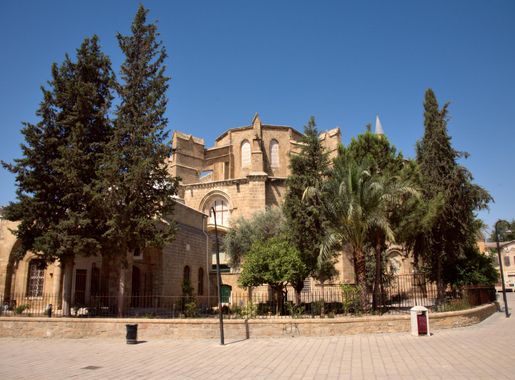
Nicosia: The Heartbeat of Cyprus
Discover the rich history, cultural tapestry, and modern vibrancy of Nicosia, the last divided capital in Europe, offering a unique blend of ancient and contemporary attractions.
Nicosia, the capital city of Cyprus, is a fascinating blend of ancient history and modern vibrancy. The city is divided by the Green Line, making it the last divided capital in Europe. On one side, you have the Greek Cypriot South, and on the other, the Turkish Cypriot North. This unique division adds a layer of historical intrigue and cultural diversity to your visit. As you stroll through the city, you'll encounter a tapestry of influences from various civilizations, including Byzantine, Venetian, and Ottoman. The Old City, encircled by Venetian walls, is a maze of narrow streets filled with shops, cafes, and traditional houses. Don't miss the chance to visit the Ledra Street crossing, where you can seamlessly walk from one part of the city to the other. Modern Nicosia offers a different flavor with its bustling shopping districts, contemporary art galleries, and vibrant nightlife. The city is also home to numerous museums, such as the Cyprus Museum, which houses an impressive collection of artifacts dating back to the Neolithic age. For a taste of local life, head to Laiki Geitonia, a pedestrian area filled with charming taverns and craft shops. Nicosia's culinary scene is another highlight of the city. From traditional Cypriot meze to international cuisine, the city's restaurants cater to all tastes. Be sure to try local specialties like halloumi cheese, souvlaki, and loukoumades (fried dough balls soaked in honey syrup). The city's coffee culture is also worth exploring, with many cozy cafes offering a perfect spot to relax and people-watch. Whether you're interested in history, culture, shopping, or food, Nicosia has something to offer every traveler. Its unique blend of past and present makes it a must-visit destination in Cyprus.
Local tips in Nicosia
- Carry your passport if you plan to cross the Green Line between the Greek and Turkish sides of the city.
- Wear comfortable shoes for exploring the narrow, cobbled streets of the Old City.
- Visit early in the morning to avoid the midday heat, especially in summer.
- Try local dishes at traditional taverns in Laiki Geitonia for an authentic culinary experience.
- Use public transportation or walk; the city is compact and many attractions are within walking distance.
Neighbourhoods in Nicosia
Nicosia: The Heartbeat of Cyprus
Nicosia, the capital city of Cyprus, is a fascinating blend of ancient history and modern vibrancy. The city is divided by the Green Line, making it the last divided capital in Europe. On one side, you have the Greek Cypriot South, and on the other, the Turkish Cypriot North. This unique division adds a layer of historical intrigue and cultural diversity to your visit. As you stroll through the city, you'll encounter a tapestry of influences from various civilizations, including Byzantine, Venetian, and Ottoman. The Old City, encircled by Venetian walls, is a maze of narrow streets filled with shops, cafes, and traditional houses. Don't miss the chance to visit the Ledra Street crossing, where you can seamlessly walk from one part of the city to the other. Modern Nicosia offers a different flavor with its bustling shopping districts, contemporary art galleries, and vibrant nightlife. The city is also home to numerous museums, such as the Cyprus Museum, which houses an impressive collection of artifacts dating back to the Neolithic age. For a taste of local life, head to Laiki Geitonia, a pedestrian area filled with charming taverns and craft shops. Nicosia's culinary scene is another highlight of the city. From traditional Cypriot meze to international cuisine, the city's restaurants cater to all tastes. Be sure to try local specialties like halloumi cheese, souvlaki, and loukoumades (fried dough balls soaked in honey syrup). The city's coffee culture is also worth exploring, with many cozy cafes offering a perfect spot to relax and people-watch. Whether you're interested in history, culture, shopping, or food, Nicosia has something to offer every traveler. Its unique blend of past and present makes it a must-visit destination in Cyprus.
When is the best time to go to Nicosia?
Iconic landmarks you can’t miss
Büyük Han
Discover the historical allure and vibrant culture of BüyüK Han, a unique landmark in Nicosia, Cyprus, where history meets artistry.
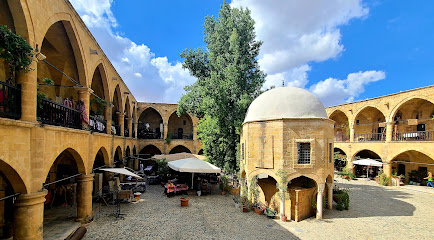
Selimiye Camii
Discover the cultural and architectural marvel of Selimiye Camii, a historic mosque blending Gothic and Islamic styles in North Nicosia, Cyprus.
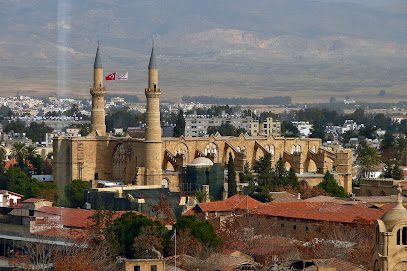
Kyrenia Gate
Explore the historic Kyrenia Gate in Nicosia, a majestic landmark that showcases the rich cultural heritage of Cyprus and invites discovery.
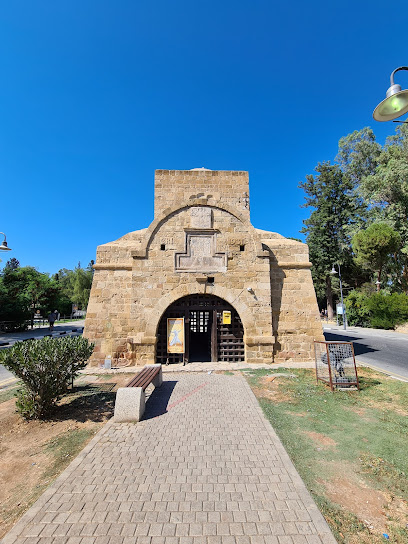
Shacolas Tower Museum and Observatory
Experience the rich history and breathtaking views of Nicosia from the Shacolas Tower Museum and Observatory, a top destination for tourists.
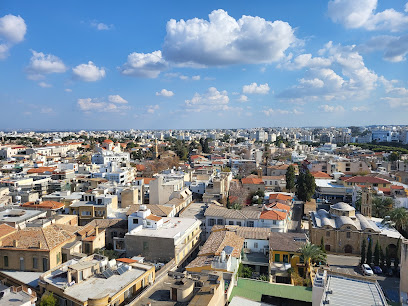
The Leventis Municipal Museum of Nicosia
Explore the captivating history and art of Cyprus at The Leventis Municipal Museum of Nicosia, a cultural gem in the heart of Nicosia.
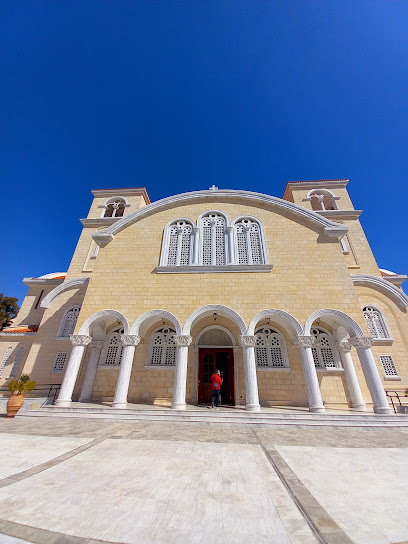
The Liberty Monument
Explore the Liberty Monument in Nicosia, a powerful symbol of Cyprus' fight for independence and a must-see for history enthusiasts.
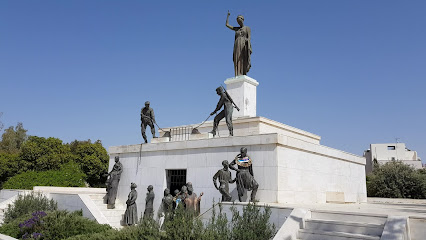
The House of Hadjigeorgakis Kornesios - Ethnological Museum
Explore the House of Hadjigeorgakis Kornesios, an ethnological museum in Nicosia showcasing the rich cultural heritage of Cyprus through exquisite artifacts and interior design.

St. John's Cathedral
Discover the architectural splendor and rich history of St. John's Cathedral, a Baroque masterpiece in the heart of Nicosia, Cyprus.
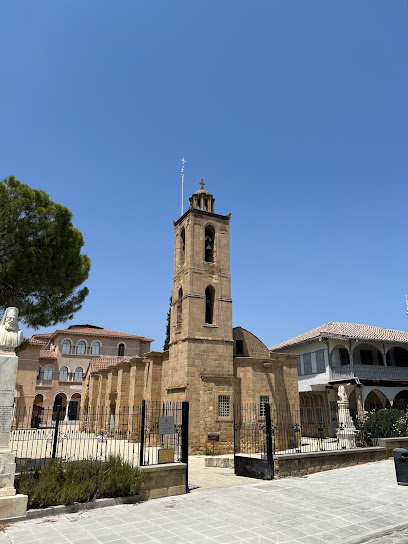
Bedesten - Old Hagia Nikola Church
Explore the rich history and architectural beauty of Bedesten - Old Hagia Nikola Church, a must-visit landmark in North Nicosia.
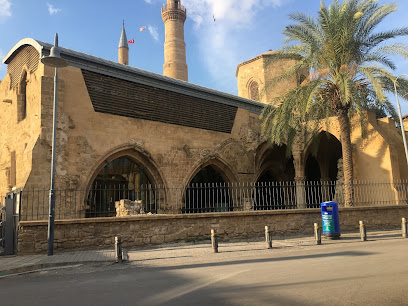
Venetian Column
Discover the Venetian Column in Nicosia, a historical landmark that showcases the island's rich heritage and architectural beauty.
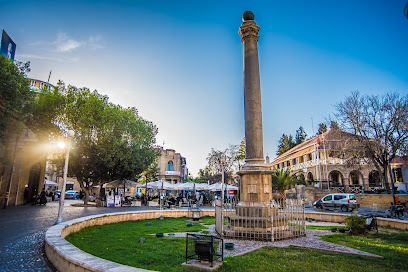
Famagusta Gate
Explore the stunning Famagusta Gate in Nicosia, a historical landmark showcasing Venetian architecture and rich Cypriot heritage.
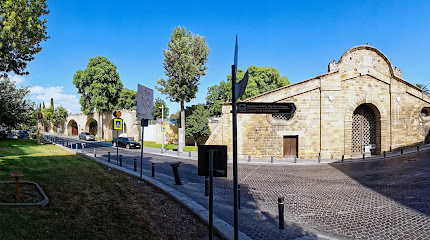
Nicosia Old City
Explore the enchanting Nicosia Old City, a historical treasure trove filled with culture, architecture, and local flavors in the heart of Cyprus.
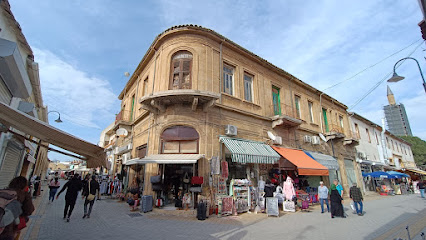
Cyprus Folk Art Museum
Explore the Cyprus Folk Art Museum in Nicosia for an authentic glimpse into the island's vibrant cultural heritage and artistic traditions.
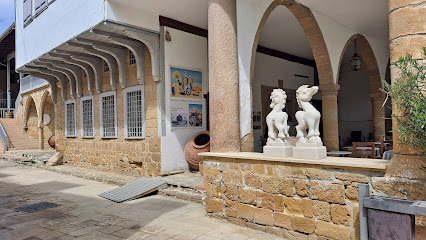
Πύλη Πάφου
Explore the historical splendor of Paphos Gate, an iconic landmark in Nicosia, showcasing centuries of rich heritage and architectural beauty.
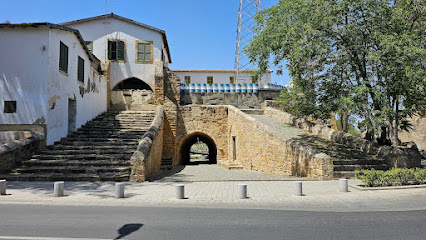
Ledras одна из самых посещаемых улиц Никосии
Discover the lively Ledras Street in Nicosia—where rich history meets modern charm in the heart of Cyprus.
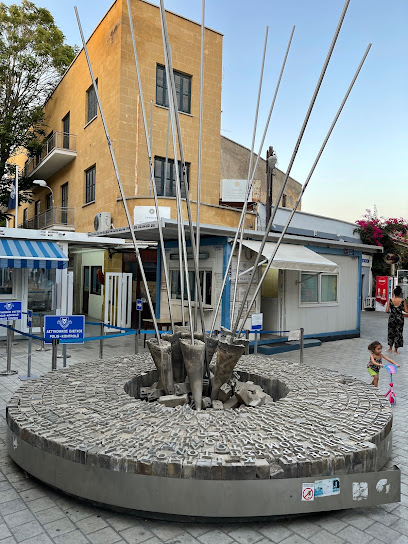
Unmissable attractions to see
Holy Church of Saint Lazarus
Experience the spiritual grandeur and historical significance of the Holy Church of Saint Lazarus in Larnaca, Cyprus.
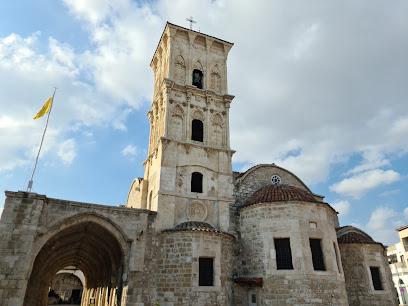
Kyrenia Harbour
Discover the beauty and history of Kyrenia Harbour, a stunning marina in Cyprus, perfect for dining, shopping, and breathtaking sunset views.
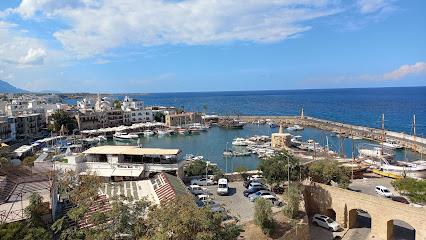
Bellapais Abbey
Explore the historic Bellapais Abbey, a serene medieval monastery in Beylerbeyi offering stunning views and rich cultural heritage.
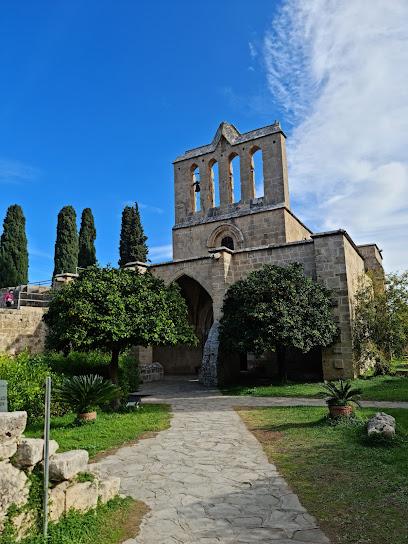
Finikoudes Beach
Discover Finikoudes Beach in Larnaca, Cyprus - a beautiful public beach with golden sands, crystal-clear waters, and a vibrant promenade for leisure and entertainment.
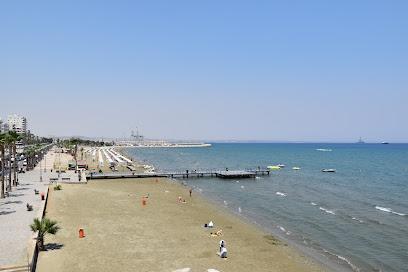
Larnaka Medieval Fort
Explore the captivating Larnaka Medieval Fort, a historical gem in Cyprus offering stunning views and rich heritage.
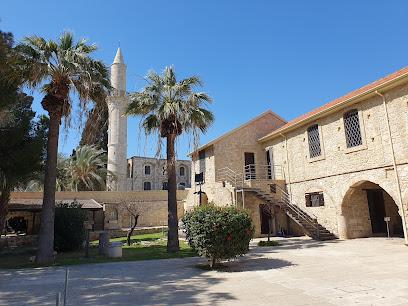
Girne (Kyrenia) Castle
Visit Girne Castle in Kyrenia, Cyprus for a captivating journey through history with stunning views and a serene atmosphere.
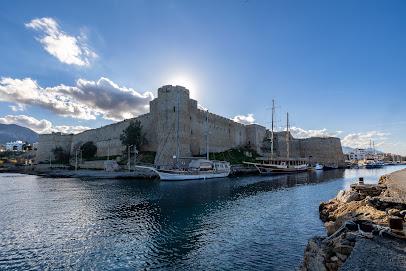
The Cyprus Museum
Explore the rich archaeological heritage of Cyprus at The Cyprus Museum, a treasure trove of ancient artifacts and historical insights.
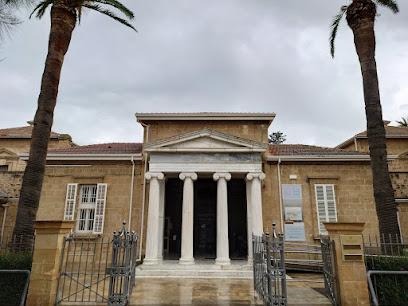
Lefkara
Explore the enchanting village of Lefkara, Cyprus – a hub of artisanal lacework, rich history, and breathtaking landscapes.
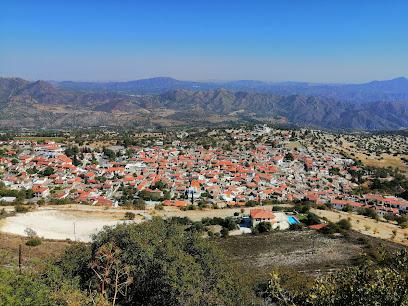
Mackenzie Beach
Experience the beauty of Mackenzie Beach in Cyprus, where golden sands and vibrant beach life create the perfect seaside escape.
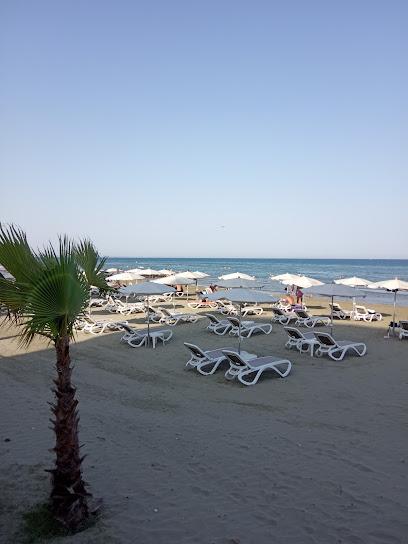
Selimiye Camii
Discover the architectural splendor and rich history of Selimiye Camii, a remarkable mosque in Nicosia, Cyprus, that reflects diverse cultural influences.

Saint Barnabas Monastery
Discover the serene beauty and rich heritage of Saint Barnabas Monastery in Tuzla, Cyprus, a perfect blend of spirituality and history.
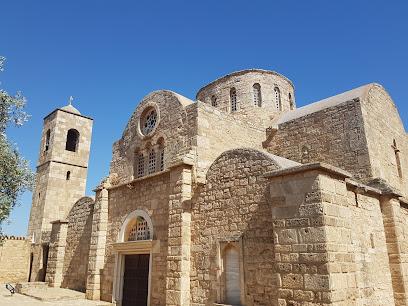
Neolithic Settlement of Choirokoitia
Explore the ancient Neolithic Settlement of Choirokoitia in Cyprus, a UNESCO World Heritage Site showcasing early human civilization and stunning architecture.
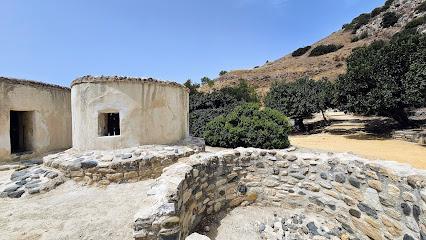
Kamares Aqueduct
Explore the iconic Kamares Aqueduct in Larnaca, Cyprus, a stunning historical landmark showcasing 18th-century architecture and engineering prowess.
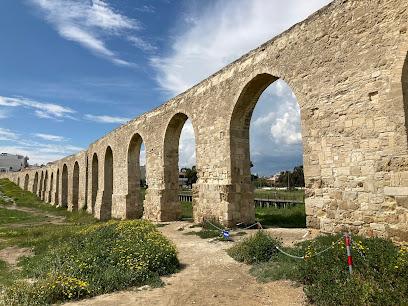
Kastella Beach - Blue Flag
Discover the pristine beauty of Kastella Beach in Larnaca, Cyprus, where sun-soaked days and vibrant Mediterranean vibes await every traveler.

Holy Church of the Virgin Mary Angeloktisti at Kiti
Discover the stunning Holy Church of the Virgin Mary Angeloktisti in Kiti, a remarkable blend of Byzantine architecture and rich spiritual heritage.
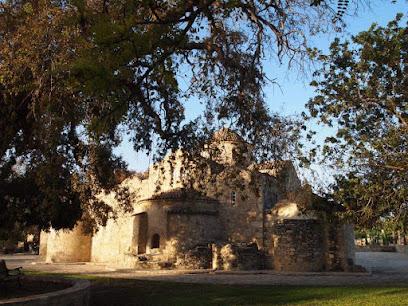
Essential places to dine
Piatsa Gourounaki
Experience authentic Cypriot cuisine at Piatsa Gourounaki in Nicosia—where every meal is a celebration of flavors.
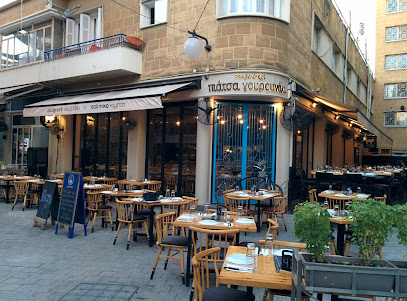
To Anamma Traditional Restaurant
Experience authentic Greek flavors at To Anamma Traditional Restaurant in Nicosia - where every meal tells a story.
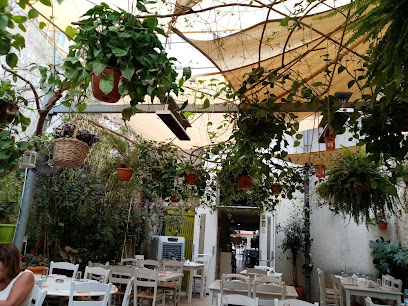
Zanettos Cypriot Tavern
Discover authentic Cypriot flavors at Zanettos Cypriot Tavern in Nicosia – a must-visit for food lovers seeking local culinary experiences.
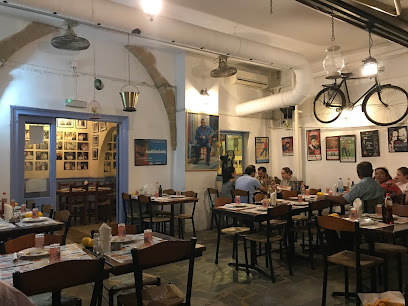
Avo Armenian Food
Experience authentic Armenian cuisine at Avo in Nicosia—where every dish tells a story of rich culinary heritage.
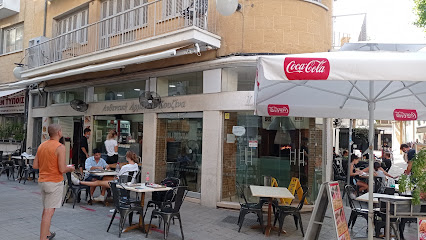
Fanous Lebanese Restaurant
Discover the authentic taste of Lebanon at Fanous Restaurant in Nicosia - where every dish tells a story.
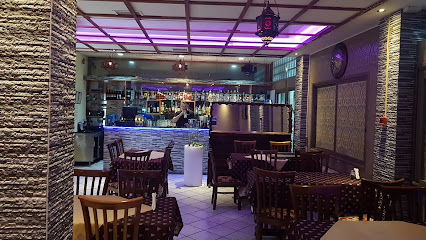
Sawa Restaurant
Experience the rich flavors of authentic Syrian cuisine at Sawa Restaurant in Nicosia – a culinary delight not to be missed!

Εστιατόριο Μπέμπα
Experience the rich flavors of Cyprus at Εστιατόριο Μπέμπα, where traditional cuisine meets modern elegance in Nicosia's bustling city center.
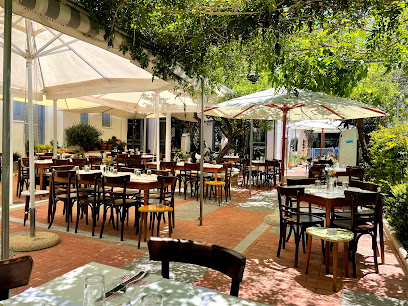
Il Forno Restaurant
Experience authentic Italian cuisine at Il Forno in Nicosia—where tradition meets taste in every delicious dish.
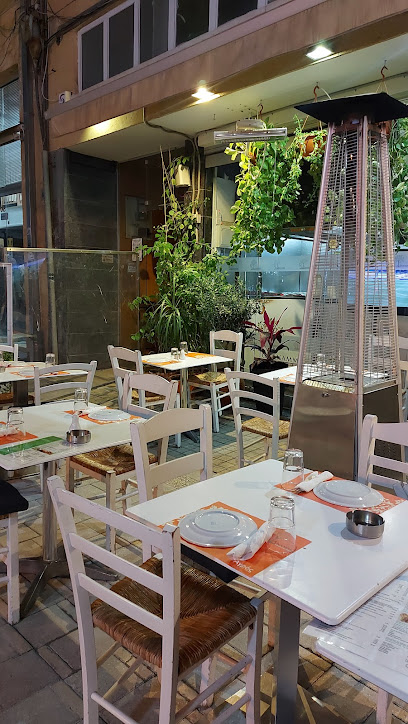
Pyxida Fish Tavern
Discover the flavors of Cyprus at Pyxida Fish Tavern, where fresh seafood meets traditional hospitality in the heart of Nicosia.
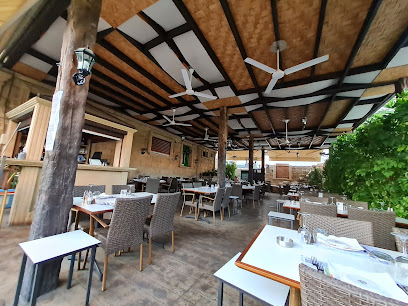
Rokoko Kitchen&Bar (Nicosia)
Experience authentic Italian cuisine at Rokoko Kitchen&Bar in Nicosia - where tradition meets modern culinary artistry.
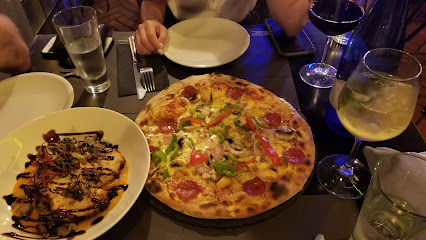
DOT Restaurant
Discover authentic Cypriot cuisine with modern twists at DOT Restaurant in Nicosia – a must-visit for every food lover.
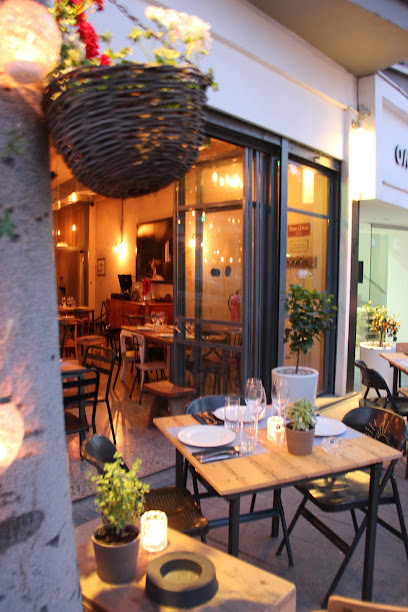
Valtou Rigani - Souvlakopolio (Nicosia)
Experience authentic Greek cuisine at Valtou Rigani - Souvlakopolio in Nicosia with delicious souvlaki and vibrant Mediterranean flavors.
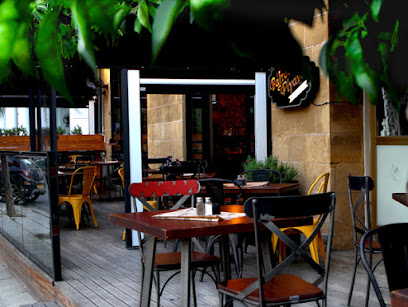
Skinny Fox Restaurant
Experience authentic Cypriot cuisine at Skinny Fox Restaurant in Nicosia - where every dish tells a story of tradition and flavor.
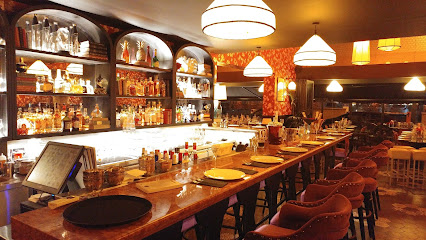
Scale Restaurant - MAP Hotel
Experience the best of Cypriot and international cuisine at Scale Restaurant in Nicosia's City Centre - a must-visit for food lovers.
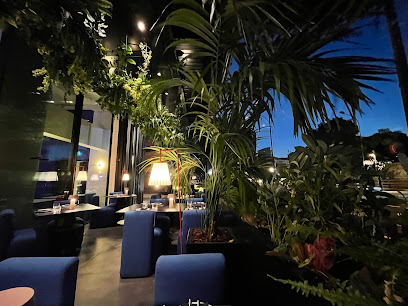
Henry's
Discover culinary excellence at Henry's in Nicosia – where local flavors meet international flair in an inviting atmosphere.

Markets, malls and hidden boutiques
Mall Of Cyprus
Experience Cyprus shopping at its finest at the Mall of Cyprus, featuring diverse shops, delightful dining, and family-friendly entertainment.
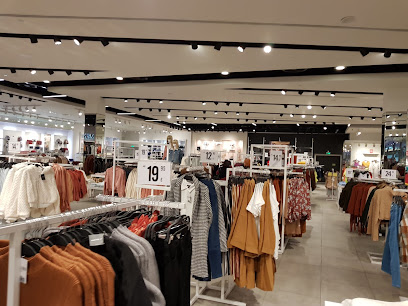
Nicosia Mall
Explore Nicosia Mall, Cyprus' largest shopping hub, featuring a blend of fashion, gastronomy, and entertainment for every visitor.
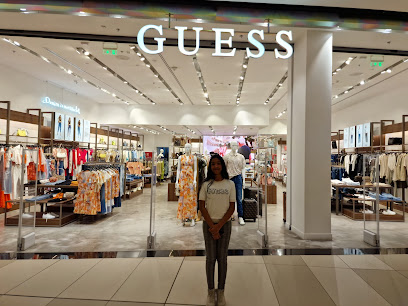
The Mall Of Engomi
Discover the ultimate shopping experience at The Mall of Engomi in Cyprus, where diverse brands meet delicious dining and family-friendly entertainment.
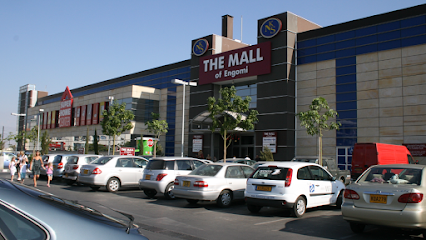
Istorja House no9
Explore Istorja House No9, a unique gift shop and café in Nicosia, showcasing local crafts and delicious coffee in a cozy atmosphere.
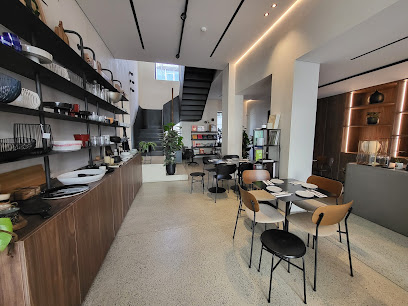
Le Monde d'Amélie
Explore Le Monde d'Amélie in Nicosia for unique gifts, exquisite jewelry, and captivating paintings that embody the spirit of Cyprus.

FABoutique / Ermou 300
Explore FABoutique at Ermou 300 for unique home goods and exquisite lighting in the heart of Nicosia, Cyprus.
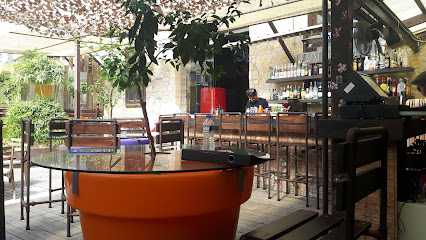
Groovy The Store (Larnakos Shop)
Explore Groovy The Store in Nicosia for unique gifts and authentic souvenirs that capture the spirit of Cyprus.
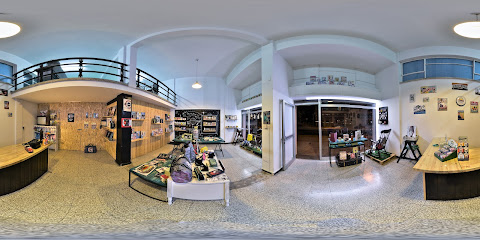
Objects
Explore Nicosia's Objects Gift Shop for unique gifts, exquisite cutlery, and elegant glassware that showcase Cypriot craftsmanship.
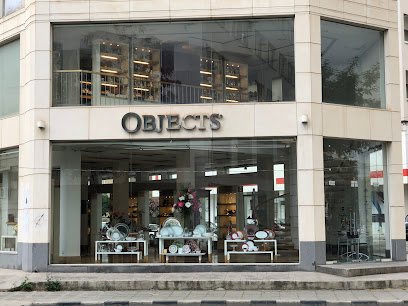
thecollective vintage & pre-loved
Explore a curated selection of vintage clothing and unique accessories at The Collective Vintage & Pre-Loved in Nicosia, Cyprus.
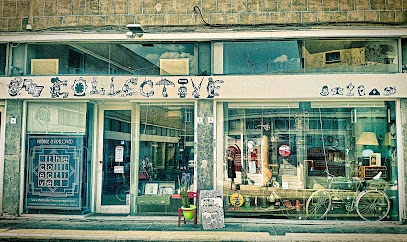
Second Hand Shop Nicosia
Discover unique vintage treasures at the Second Hand Shop in Nicosia, a charming destination for sustainable shopping and distinctive finds.
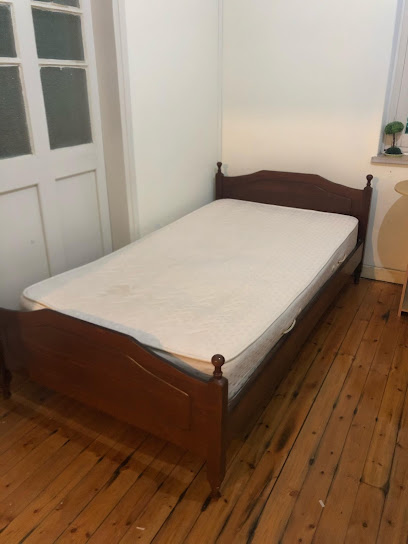
Mindy Boutiques Nicosia
Discover contemporary women's fashion at Mindy Boutiques in Nicosia, blending local charm with global trends in an elegant shopping experience.

Proud Plus Size - Nicosia
Discover stylish and comfortable men's clothing at Proud Plus Size in Nicosia, Cyprus, where fashion meets inclusivity for every body type.

Indian Shop
Explore the colorful world of fashion at the Indian Shop, where unique accessories meet rich cultural heritage in the heart of Nicosia.
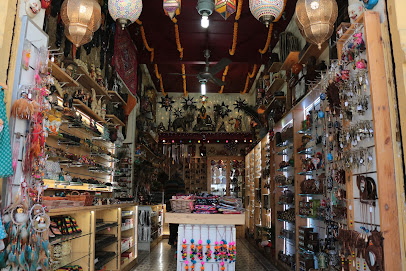
Little Heroes Boutique
Discover Little Heroes Boutique in Nicosia - a whimsical children's store offering unique toys, stylish clothing, and delightful gifts for little adventurers.
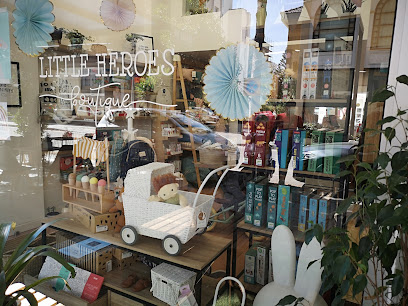
CONELLE Nicosia (Themistokli Dervi)
Explore CONELLE Nicosia - your gateway to exquisite clothing and unique fashion in the heart of Cyprus's capital.

Essential bars & hidden hideouts
Moondog's Bar & Grill
Discover Moondog's Bar & Grill in Nicosia for an unforgettable dining and nightlife experience featuring delicious grilled dishes and vibrant atmosphere.
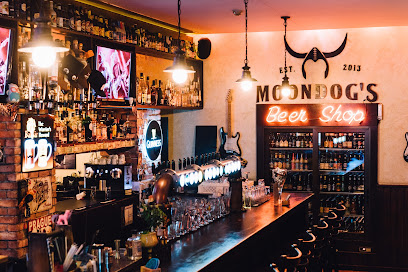
The Gym
Experience the vibrant nightlife and culinary delights at The Gym in Nicosia, a unique bar and restaurant perfect for every occasion.
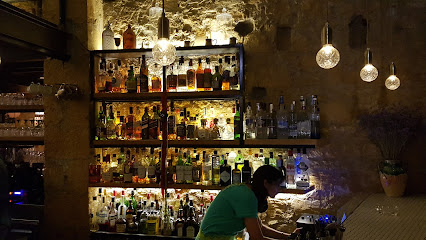
Lost + Found Drinkery
Experience the vibrant nightlife at Lost + Found Drinkery in Nicosia, where unique cocktails and a lively atmosphere await every visitor.
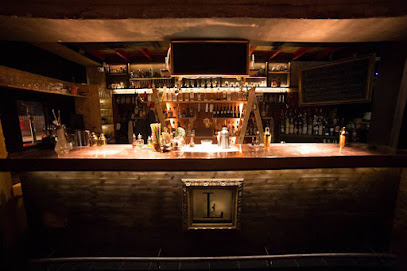
Patio Cocktail Bar
Experience the vibrant nightlife of Nicosia at Patio Cocktail Bar, where exquisite cocktails meet delightful tapas in a chic setting.

BrewFellas Beer Bar
Explore the vibrant beer scene at BrewFellas Beer Bar in Nicosia, where craft beer meets a cozy atmosphere and friendly service.
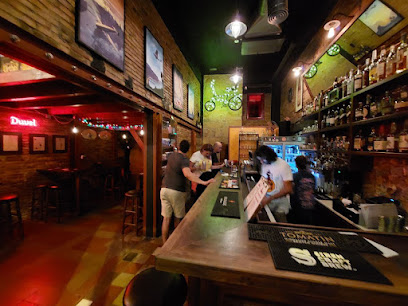
Murphy's Pub
Discover the lively atmosphere and delicious offerings of Murphy's Pub, a must-visit bar in the heart of Nicosia, Cyprus.
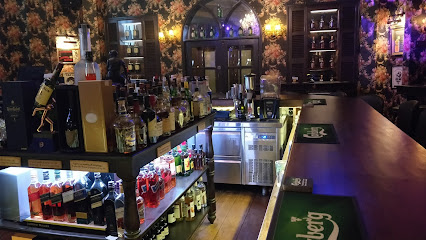
Neverland Rock Bar
Experience the electric atmosphere of Neverland Rock Bar in Nicosia, where live music and mouthwatering grill dishes create unforgettable nights.
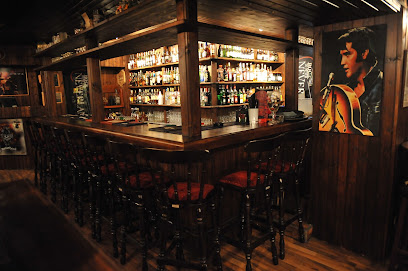
New Division
Experience the vibrant nightlife of Nicosia at New Division, where expertly crafted drinks and a lively atmosphere await.
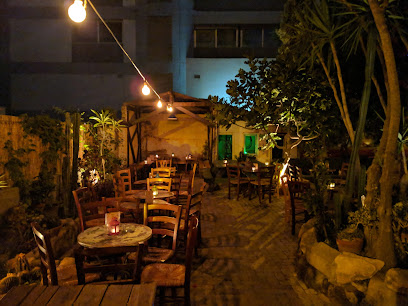
Plato's Bar
Experience the vibrant nightlife of Old Nicosia at Plato's Bar, where local flavors and eclectic vibes come together for an unforgettable evening.
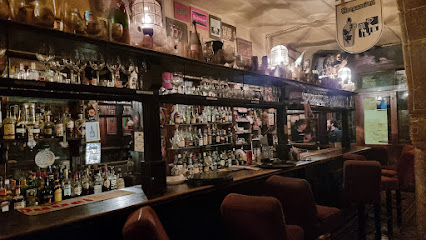
Notes And Spirits
Discover the vibrant nightlife of Nicosia at Notes And Spirits, where expertly crafted cocktails and a lively atmosphere await.
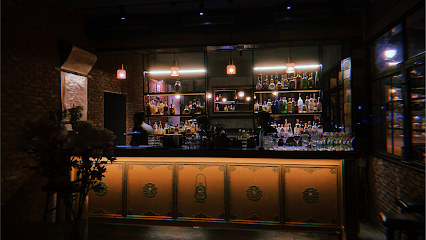
Bar Souvenir
Explore Bar Souvenir in Nicosia for an unforgettable experience of delicious cocktails, local flavors, and vibrant nightlife in the heart of Cyprus.
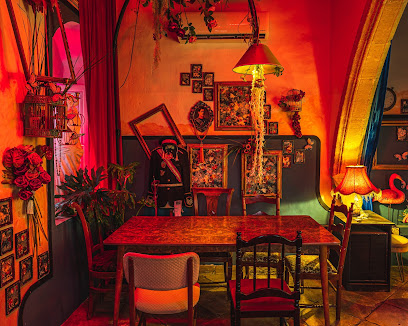
Silver Star Bar
Discover the vibrant nightlife of Nicosia at Silver Star Bar, where exquisite cocktails and fine wines await in a stylish setting.
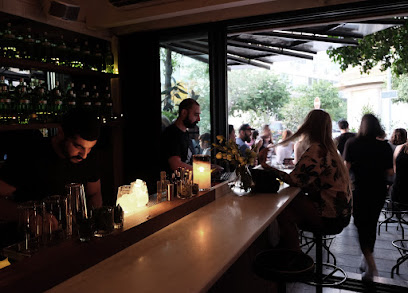
Lola Bar
Experience the vibrant nightlife of Nicosia at Lola Bar, where expertly crafted cocktails meet an inviting atmosphere and lively music.
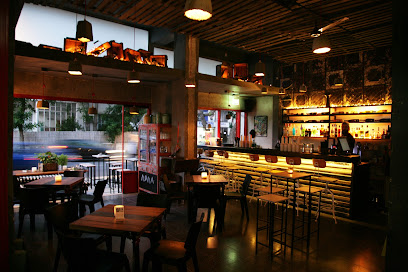
Seven Monkeys The Bar
Discover the vibrant nightlife of Nicosia at Seven Monkeys The Bar, where innovative cocktails and a lively atmosphere await.
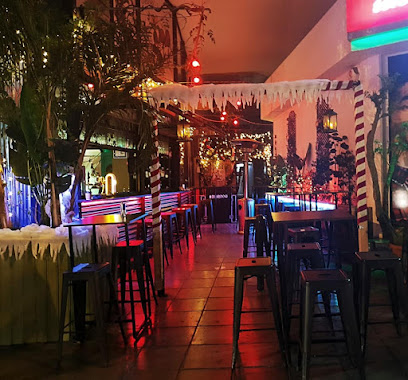
The Old Souls
Experience the vibrant nightlife at The Old Souls Bar in Nicosia, a perfect blend of enchanting atmosphere and unique entertainment options.
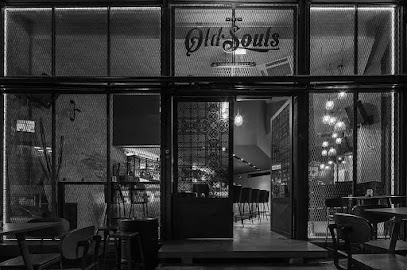
Local Phrases
-
- HelloΓεια σας
[Ya sas] - GoodbyeΑντίο
[Adio] - YesΝαι
[Ne] - NoΌχι
[Ochi] - Please/You're welcomeΠαρακαλώ
[Parakalo] - Thank youΕυχαριστώ
[Efharisto] - Excuse me/SorryΣυγνώμη
[Signomi] - How are you?Τι κάνεις;
[Ti kanis?] - Fine. And you?Καλά. Εσύ;
[Kala. Esi?] - Do you speak English?Μιλάτε Αγγλικά;
[Milate Anglika?] - I don't understandΔεν καταλαβαίνω
[Den katalaveno]
- HelloΓεια σας
-
- I'd like to see the menu, pleaseΘα ήθελα να δω το μενού, παρακαλώ
[Tha ithela na do to menu, parakalo] - I don't eat meatΔεν τρώω κρέας
[Den troo kreas] - Cheers!ΥΓΕΙΑ!
[Yia] - I would like to pay, pleaseΘα ήθελα να πληρώσω, παρακαλώ
[Tha ithela na plirosso, parakalo]
- I'd like to see the menu, pleaseΘα ήθελα να δω το μενού, παρακαλώ
-
- Help!Βοήθεια!
[Voithia!] - Go away!Φύγε!
[Fiye!] - Call the Police!Καλέστε την Αστυνομία!
[Kaleste tin Astinomia!] - Call a doctor!Καλέστε ένα γιατρό!
[Kaleste ena giatro!] - I'm lostΈχω χαθεί
[Eho hathi] - I'm illΕίμαι άρρωστος
[Eimai arrostos]
- Help!Βοήθεια!
-
- I'd like to buy...Θα ήθελα να αγοράσω...
[Tha ithela na agoraso...] - I'm just lookingΑπλά κοιτάω
[Apla kitao] - How much is it?Πόσο κοστίζει;
[Poso kostizi?] - That's too expensiveΑυτό είναι πολύ ακριβό
[Afto ine poli akribo] - Can you lower the price?Μπορείτε να μειώσετε την τιμή;
[Borite na miosete tin timi?]
- I'd like to buy...Θα ήθελα να αγοράσω...
-
- What time is it?Τι ώρα είναι;
[Ti ora ine?] - It's one o'clockΕίναι μία ώρα
[Ine mia ora] - Half past (10)Μισή (10)
[Misi (deka)] - MorningΠρωί
[Proi] - AfternoonΑπόγευμα
[Apoyevma] - EveningΒράδυ
[Vradi] - YesterdayΧθες
[Hthes] - TodayΣήμερα
[Simera] - TomorrowΑύριο
[Avrio] - 1Ένα
[Ena] - 2Δύο
[Dio] - 3Τρία
[Tria] - 4Τέσσερα
[Tessera] - 5Πέντε
[Pente] - 6Έξι
[Exi] - 7Επτά
[Epta] - 8Οκτώ
[Okto] - 9Εννιά
[Ennia] - 10Δέκα
[Deka]
- What time is it?Τι ώρα είναι;
-
- Where's a/the...?Πού είναι ένα/το...;
[Pou ine ena/to...?] - What's the address?Ποια είναι η διεύθυνση;
[Pia ine i diefthinsi?] - Can you show me (on the map)?Μπορείτε να μου δείξετε (στο χάρτη);
[Borite na mou deksete (sto charti)?] - When's the next (bus)?Πότε είναι το επόμενο (λεωφορείο);
[Pote ine to epomeno (leoforeio)?] - A ticket (to ....)Ένα εισιτήριο (για ....)
[Ena isitirio (ya ....)]
- Where's a/the...?Πού είναι ένα/το...;
History of Nicosia
-
Nicosia, known in ancient times as Ledra, was established circa 2500 BC. It was originally a city-state and part of the broader Mycenaean Greek civilization that spread across Cyprus. Archaeological findings suggest that it was a modest settlement during the Bronze Age, primarily focused on agriculture and trade.
-
The city gained prominence during the Byzantine era, particularly in the 4th century AD, when it became the island's capital. Nicosia was fortified with walls to protect it from Arab raids, becoming a significant center of administration and religion. Churches, monasteries, and public buildings from this period laid the foundation for Nicosia's architectural landscape.
-
In 1192, Nicosia came under the control of the Lusignan dynasty following the island's sale to Guy de Lusignan. The city flourished as a medieval hub with Gothic architecture, including the construction of the St. Sophia Cathedral, now known as the Selimiye Mosque. The Lusignan period is marked by the blending of Western European and local cultures.
-
Nicosia fell to the Ottomans in 1571 after a brutal siege. The city underwent significant changes under Ottoman rule, which lasted for over three centuries. Many churches were converted into mosques, new public baths and caravanserais were constructed, and the city's defensive walls were reinforced. This period greatly influenced the cultural and religious makeup of Nicosia.
-
In 1878, Cyprus was leased to the British Empire, marking the beginning of British colonial rule. Nicosia became the administrative center, and the city saw modernization efforts like the introduction of new administrative buildings, roads, and public services. This era also fueled nationalist sentiments that eventually led to the island's independence movements.
-
Cyprus gained independence from British rule in 1960, with Nicosia as its capital. However, inter-ethnic tensions between Greek Cypriots and Turkish Cypriots escalated, leading to the division of the city in 1974 following a Turkish invasion. Nicosia remains the last divided capital in Europe, with a buffer zone known as the Green Line separating the Greek Cypriot south from the Turkish Cypriot north.
-
Despite its divided status, Nicosia has experienced a cultural renaissance in recent years. Efforts to preserve its rich heritage have led to the restoration of historical buildings and monuments. The city hosts numerous cultural festivals, art exhibitions, and historical tours that celebrate its diverse and complex history.
Nicosia Essentials
-
Nicosia, the capital city of Cyprus, is accessible via Larnaca International Airport (LCA), which is about 50 kilometers away. From the airport, you can take a taxi, shuttle bus, or rent a car to reach Nicosia. The journey typically takes around 40-50 minutes by road. Another option is Paphos International Airport (PFO), which is approximately 150 kilometers from Nicosia, with a travel time of around 1.5 to 2 hours by car.
-
Nicosia has a well-developed public transportation system, including buses that connect different parts of the city and surrounding areas. Taxis are also widely available and relatively affordable. If you prefer to drive, car rentals are a convenient option. For a more local experience, consider walking or cycling through the city's streets and exploring its historic neighborhoods.
-
The official currency in Cyprus is the Euro (EUR). Credit and debit cards are widely accepted in hotels, restaurants, and shops. ATMs are plentiful throughout Nicosia, so withdrawing cash is easy. However, it is advisable to carry some cash for smaller establishments, local markets, or in case of emergencies.
-
Nicosia is generally a safe city for tourists. However, like any urban area, it is important to take standard precautions. Avoid poorly lit areas at night and keep an eye on your belongings in crowded places. While Nicosia does not have specific high-crime areas targeting tourists, always stay vigilant and aware of your surroundings.
-
In case of emergencies, dial 112 for immediate assistance. This number connects you to police, fire, and medical services. Nicosia has several hospitals and clinics that provide quality medical care. Pharmacies are also available for minor health issues. It is recommended to have travel insurance that covers medical emergencies.
-
Fashion: Do dress modestly, especially when visiting religious sites. Avoid wearing overly revealing clothing. Religion: Do respect local customs and traditions. Remove your shoes and cover your head when entering mosques. Public Transport: Do be respectful and give up your seat to elderly passengers. Don't eat or drink on public transport. Greetings: Do greet people with a handshake or a slight bow. Cypriots are generally friendly and welcoming. Eating & Drinking: Do try local dishes such as halloumi cheese, souvlaki, and mezze. Don't refuse food or drink offered by locals, as it is considered impolite.
-
To experience Nicosia like a local, explore the Old City with its narrow streets and historic buildings. Visit the local markets, such as the Ledra Street Market, for fresh produce and traditional Cypriot goods. Engage with locals, who are known for their hospitality and willingness to share stories about their city. Don't miss the opportunity to visit the Cyprus Museum, which houses an extensive collection of archaeological artifacts. For a unique experience, take a stroll along the Green Line, which divides the city into Greek and Turkish sectors, and learn about the city's complex history.
Trending Landmark in Nicosia
-
Büyük Han
-
Selimiye Camii
-
Kyrenia Gate
-
Shacolas Tower Museum and Observatory
-
The Leventis Municipal Museum of Nicosia
-
The Liberty Monument
-
The House of Hadjigeorgakis Kornesios - Ethnological Museum
-
St. John's Cathedral
-
Bedesten - Old Hagia Nikola Church
-
Venetian Column
-
Famagusta Gate
-
Nicosia Old City
-
Cyprus Folk Art Museum
-
Πύλη Πάφου
-
Ledras одна из самых посещаемых улиц Никосии
Nearby Cities to Nicosia
-
Things To Do in Kyrenia
-
Things To Do in Larnaca
-
Things To Do in Famagusta
-
Things To Do in Troodos
-
Things To Do in Ayia Napa
-
Things To Do in Protaras
-
Things To Do in Limassol
-
Things To Do in Pissouri
-
Things To Do in Polis Chrysochous
-
Things To Do in Paphos
-
Things To Do in Kato Paphos
-
Things To Do in Alanya
-
Things To Do in Batroun
-
Things To Do in Byblos
-
Things To Do in Beirut






